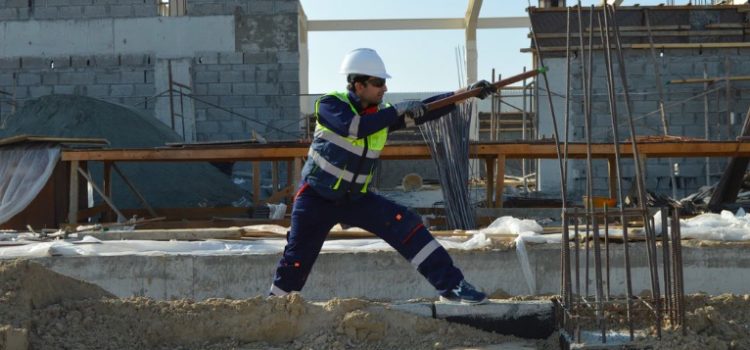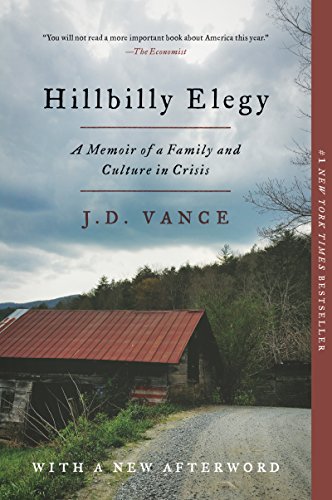

This article is an excerpt from the Shortform summary of "Hillbilly Elegy" by JD Vance. Shortform has the world's best summaries of books you should be reading.
Like this article? Sign up for a free trial here .
Who are the white working class? What do they believe? What are their values?
Hillbilly Elegy explores the cultural pathologies of the white working class in America through the personal experiences of its author, JD Vance. Growing up in a dysfunctional family and spending most of his childhood and teenage years in Middletown, Ohio, Vance saw firsthand the destructive attitudes and values of this culture—attitudes and values that he believes are primarily responsible for its perilous state. We’ll cover Vance’s views on the white working class in Appalachian America.
Social Decay and the White Working Class
The cultural pathologies of the white working class include:
An aversion to hard work and thrift, as shown by the high levels of unemployment, indebtedness, drug addiction, and the widespread propensity of individuals in his community to lavishly spend beyond their means.
A resentful, insular culture that blames the rest of the world for its problems (or just denies their existence) instead of taking an introspective look at itself.
A “culture of honor” that demands the resolution of disputes through violence or, at best, harsh verbal abuse. These modes of conflict resolution may work in the hillbilly culture of the white working class, but they leave these people utterly unprepared for a life outside it.
A destructive tendency to indulge in conspiracy theories that discourage meaningful participation in 21st-century society. These conspiracy theories can be both political and religious in nature. On the political side, for example, the widespread acceptance of “birtherism” (the belief that Barack Obama was born outside the U.S. or that he is a secret Muslim). On the religious side, Vance laments the strong hold that Young Earth creationism and disbelief in the theory of evolution have within this white working-class community.
A gloomy pessimism and fatalism that encourages people to abandon any hope that their conditions will ever improve. This attitude only encourages indifference and apathy, as well as poor work ethic: if things will never get better, there’s no point in working hard to try to improve your lot in life.
An Autobiography of Crisis in the White Working Class
As both a work of social commentary on the Appalachian white working class and an autobiography, Hillbilly Elegy takes us through Vance’s formative years where he witnesses one social dysfunction of the white working class after another:
- Endemic poverty and high levels of unemployment.
- Widespread drug and alcohol addiction, chronicled most personally and painfully through Vance’s mother’s battles with substance abuse.
- Low levels of educational attainment (Vance himself is one of the few members of his extended family to attend college).
- Child abuse and domestic violence.
- Verbal abuse.
- Marital strife (vividly demonstrated by the five husbands Vance’s mother cycles through).
- Welfare dependency.
Vance shares the story of his struggles growing up within this culture of the white working class as a means of articulating a broader social and cultural critique of the Appalachian white working class. Through it all, however, Vance is undeniably proud of where he comes from and clearly loves his family very dearly.
As a teenager, JD got a job at a local grocery store. From this vantage point, he got a firsthand look at many of the social ills that he would later identify as key sources of the problems plaguing his white working-class community.
He noticed that poorer customers tended to pile their carts with unhealthy prepackaged, canned, or frozen foods. The more affluent customers, meanwhile, bought more fresh meat and produce. More importantly, he saw how financially irresponsible so many of his neighbors were. Many of them were dependent on government assistance, but they were adept at gaming the system.
For example, they would use their food stamps to buy soda, and then sell them at a discount for cash. It was all profit, since they weren’t paying for the soda in the first place—the government was. Even as a teenager, he could astutely observe that people living off cash assistance programs were living at a level of material comfort that he couldn’t even dream of.
He saw destitute people still throwing their money away on luxury items like iPhones and big screen TVs, usually financed through high-interest credit cards and payday loans. Nobody seemed to save for a rainy day: as soon as you got some money, you squandered it on something frivolous.
Class Differences
As an adult, JD notes his mother’s trial as his first exposure to America’s class differences.
Even as a child, he observed that the social workers, judges, and lawyers all spoke in what he dubbed a “TV accent.” This was the neutral, flat, non-regional accent in which national news anchors speak. It was a jarring contrast from the Appalachian twang that so many of JD’s family and friends spoke with.
Looking back, he sees this as an inflection point: the beginning of his understanding that there was a big difference between the people who wrote and enforced the laws, and those who were subjected to them—and he and his white working-class community were firmly in the latter camp.
Another shock to the system happened when JD visited his Uncle Jimmy in California. This wasn’t his first time travelling away from home. JD had visited relatives in Kentucky, Pennsylvania, South Carolina, and Texas, but all of those trips bore something in common: they were all journeys to places that were firmly entrenched in hillbilly, white working-class culture. The family he saw there lived the same way people did in Middletown: eating the same foods, practicing the same religion, and sharing the same outlook on life—with all the good and bad that that outlook entailed.
But California was different, filled with people who came from different backgrounds and didn’t carry the same baggage of hillbilly, white working-class culture. JD visited wineries, met LGBT people in San Francisco’s Castro district, and had other experiences that he couldn’t have had in a place like Middletown. It showed him that there was a wider world outside of the culture from which he’d come.
———End of Preview———

Like what you just read? Read the rest of the world's best summary of "Hillbilly Elegy" at Shortform . Learn the book's critical concepts in 20 minutes or less .
Here's what you'll find in our full Hillbilly Elegy summary :
- The hallmarks of hillbilly culture and why they hold people back
- How JD Vance broke out of his hillbilly childhood and graduated from Yale
- Why the author thinks hillbillies might be beyond saving






